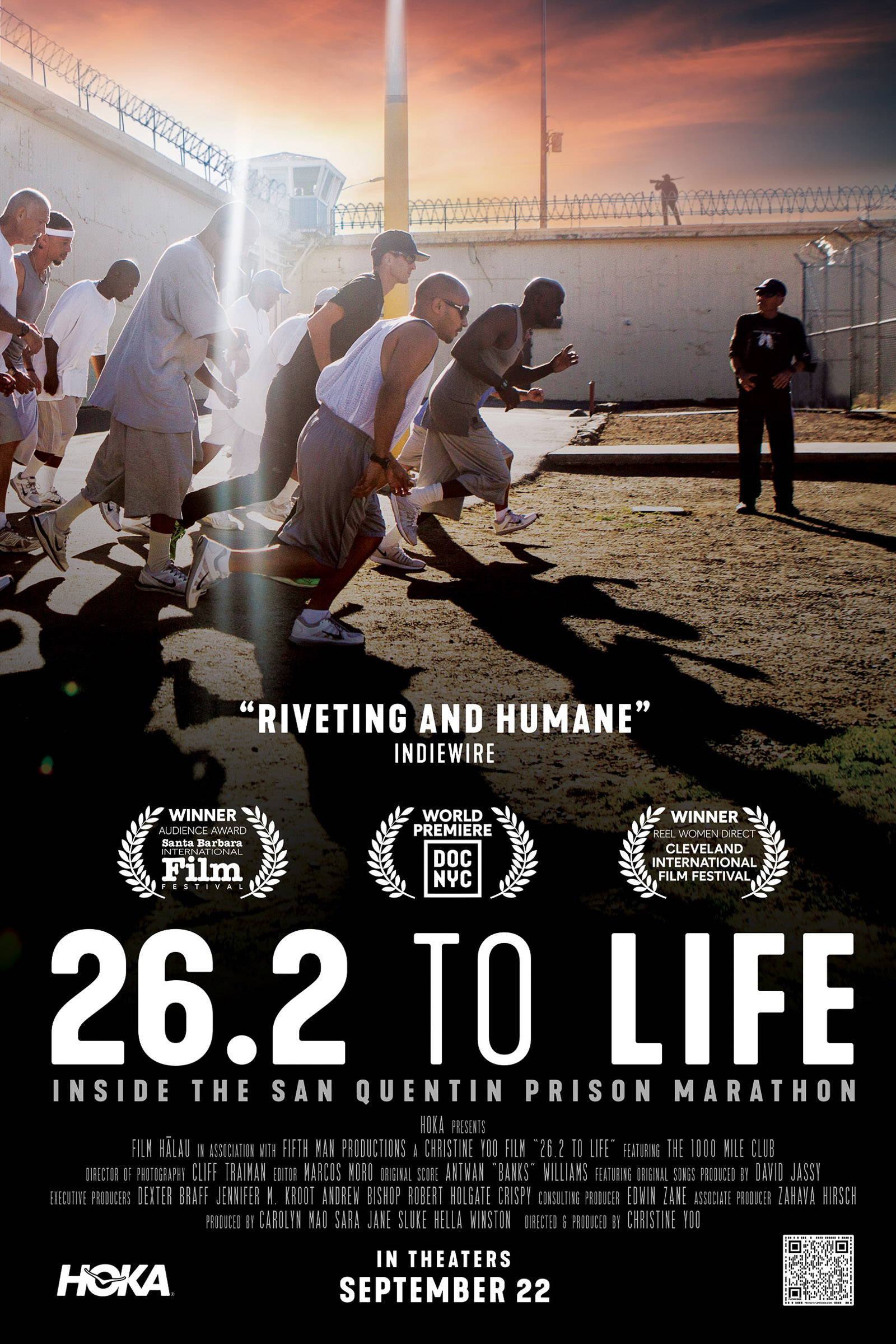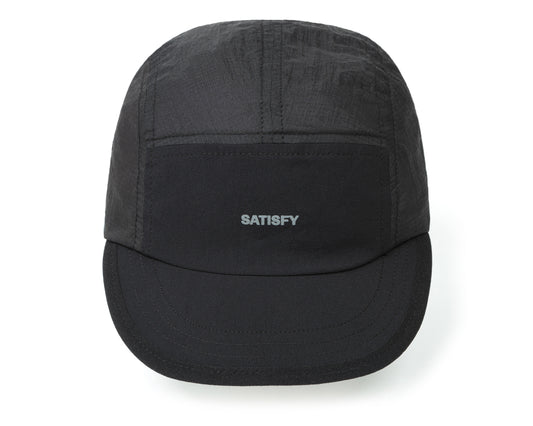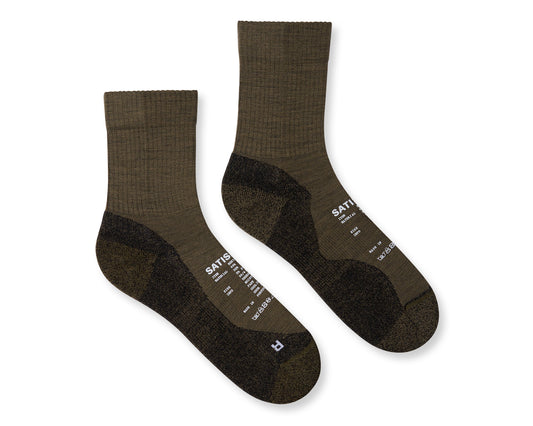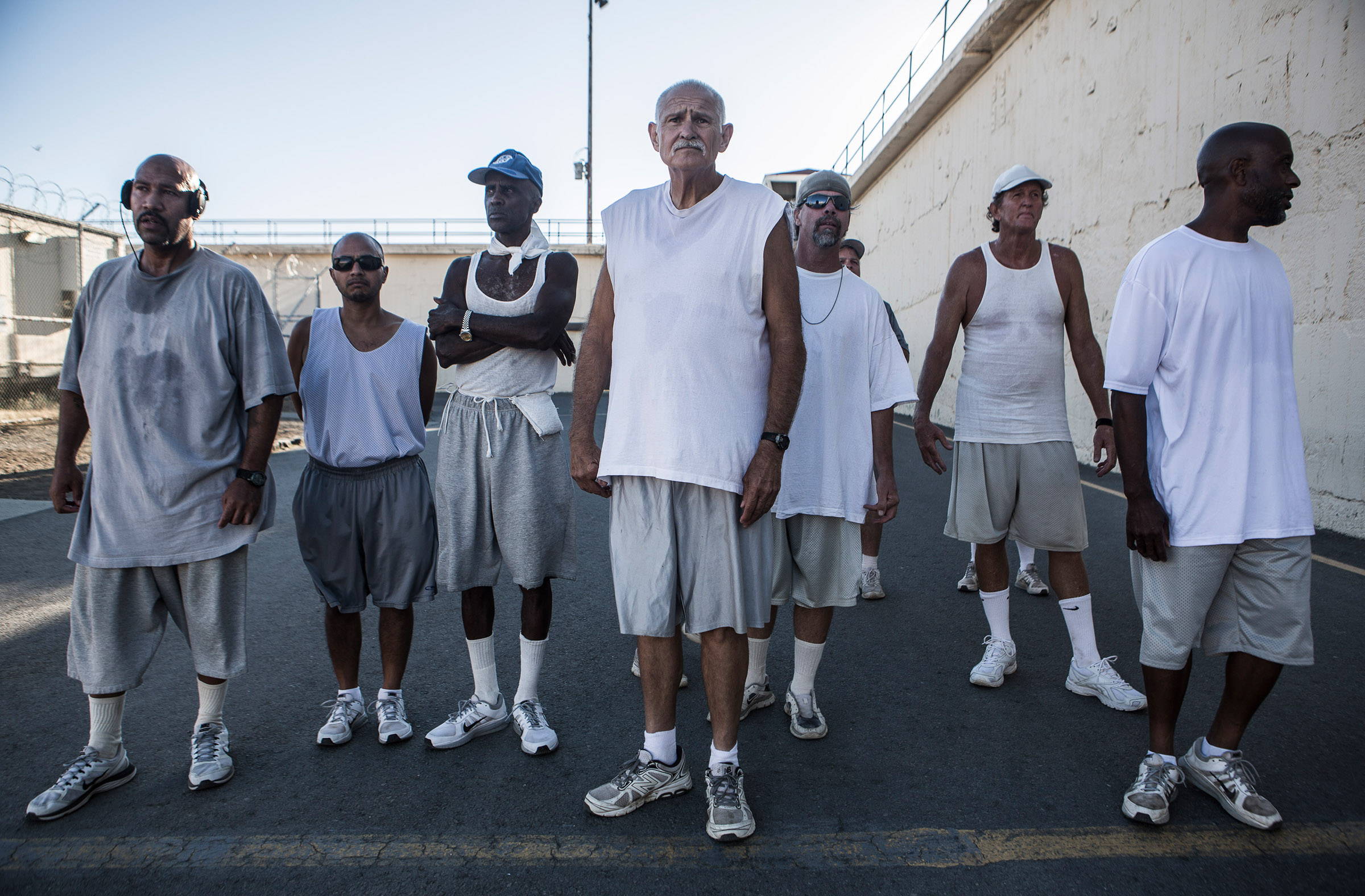
26.2 to Life is a documentary that follows the story of The 1000 Mile Club as they train for the upcoming San Quintin Prison Marathon. The marathon involves running 105 laps of the yard, which might sound torturously monotonous to those of us on the outside, but for the incarcerated 'lifers' running the marathon, it's a chance to achieve something they never thought possible and redefine themselves beyond their crimes. It's an incredible film and more proof that our sport can be, and very often is, the driving force behind enormous positive change.
POSSESSED phoned director Christine Yoo on the eve of the film's ESPN+ premier to discuss the project's origins, the transformative qualities of running, and why she hasn't signed up for the Hawaii Marathon yet.
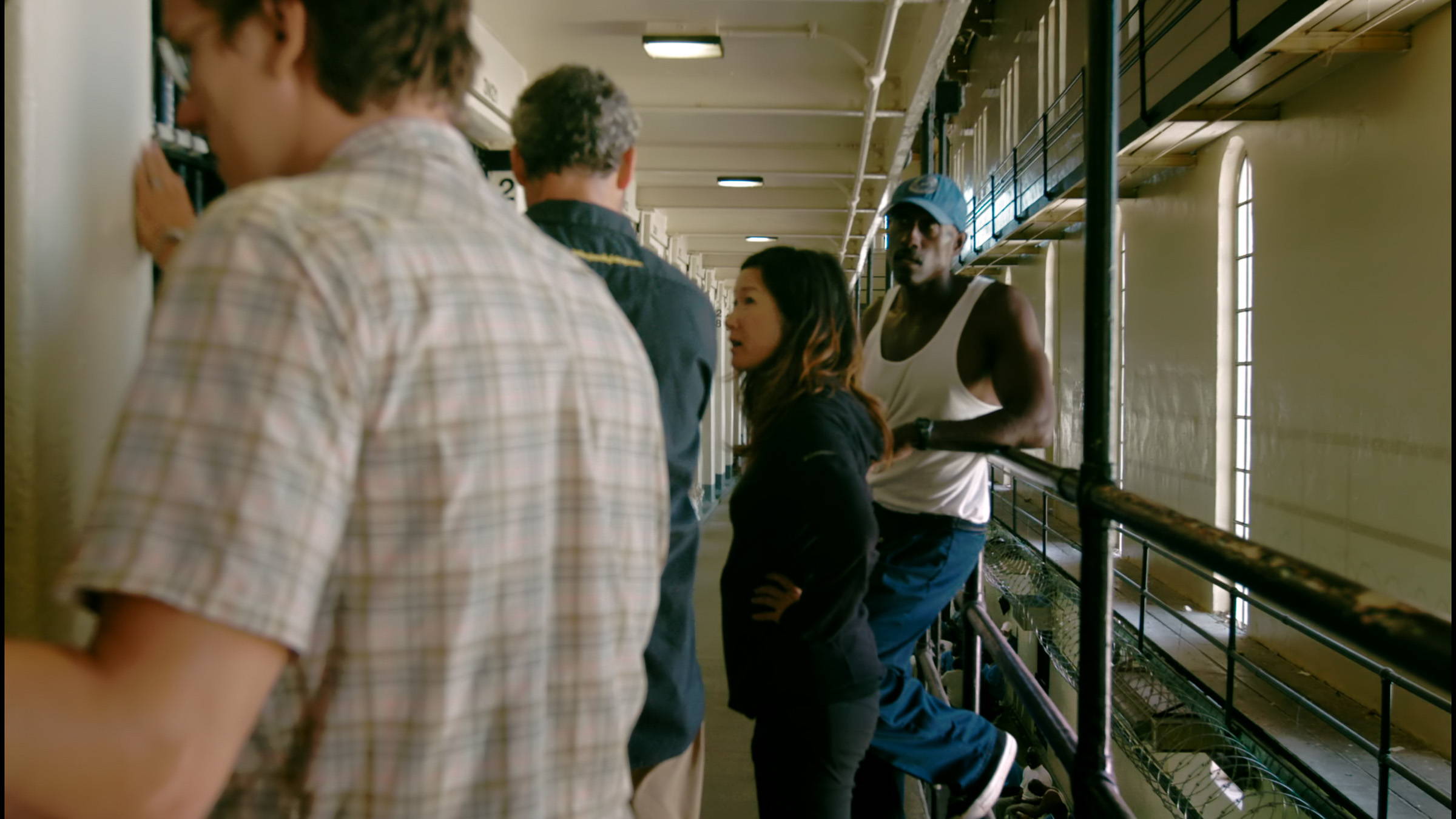
'It was just one of those moments where, by the end of reading the article, I knew I had to do this. It was just one of those things. But my relationship with the prison system began many years before.'
Hey Christine! How's Hawaii today?
Hey! Oh, it's lovely. I mean, it's Hawaii—what can I say?
And how's the movie going? It's won a bunch of awards, right? I read it's already won more than twelve?
Yeah, there's been thirteen or fourteen.
That's great!
Well, yeah, and especially considering there was never a clear path forward. I mean, we received a ton of rejections beforehand. So, I was thrilled when we got into Doc NYC [Festival], which was our premiere. We were working on this movie for so long and received so much rejection along the way, so—
When you say rejection, do you mean on the festival circuit, during production, or when getting funding?
All of the above. It was a struggle to get financing in place, tons of rejections from all the major film festivals, like Sundance, SXSW, Tribeca—they all rejected us.
Wow.
I mean, there's so much competition in those festivals. And, you know, this is my first documentary. I normally work as a TV producer, so I don't have any fanciness behind my name, so to speak.
[Laughter]
Right, you're a newcomer. Well, congratulations. What a fantastic result for your first crack at documentary filmmaking! How did the project start?
In June 2016, a GQ magazine article about the San Quintin Marathon popped up on my newsfeed, and it immediately captured my imagination. It was just one of those moments where, by the end of reading the article, I knew I had to do this. It was just one of those things. But my relationship with the prison system began many years before. I had a friend who was falsely accused, wrongfully convicted, and sentenced to 271 years in a California State prison.
Is this person still inside or are they out?
Miraculously, he got out last year after 26 years.
Jesus. 26 years?
Yeah, 26 and some change. And actually, I have to say that doing this film ended up helping him in a lot of ways, because when I was at San Quintin and spending so much time with the people there, I found out about how guys were getting out... Well, this is weird because once people are in the system, they get shuffled to all these different prisons, so he and I fell out of contact for a few years.
That sucks.
Yeah, and you know, sometimes when people are in prison for life, they want to cut off ties. Anyway, the first day that I was filming inside San Quintin, I was interviewed for the San Quintin newspaper, and I named him in the interview and said how he was one of the main inspirations for me doing his movie; then six months later, I received a letter from him!
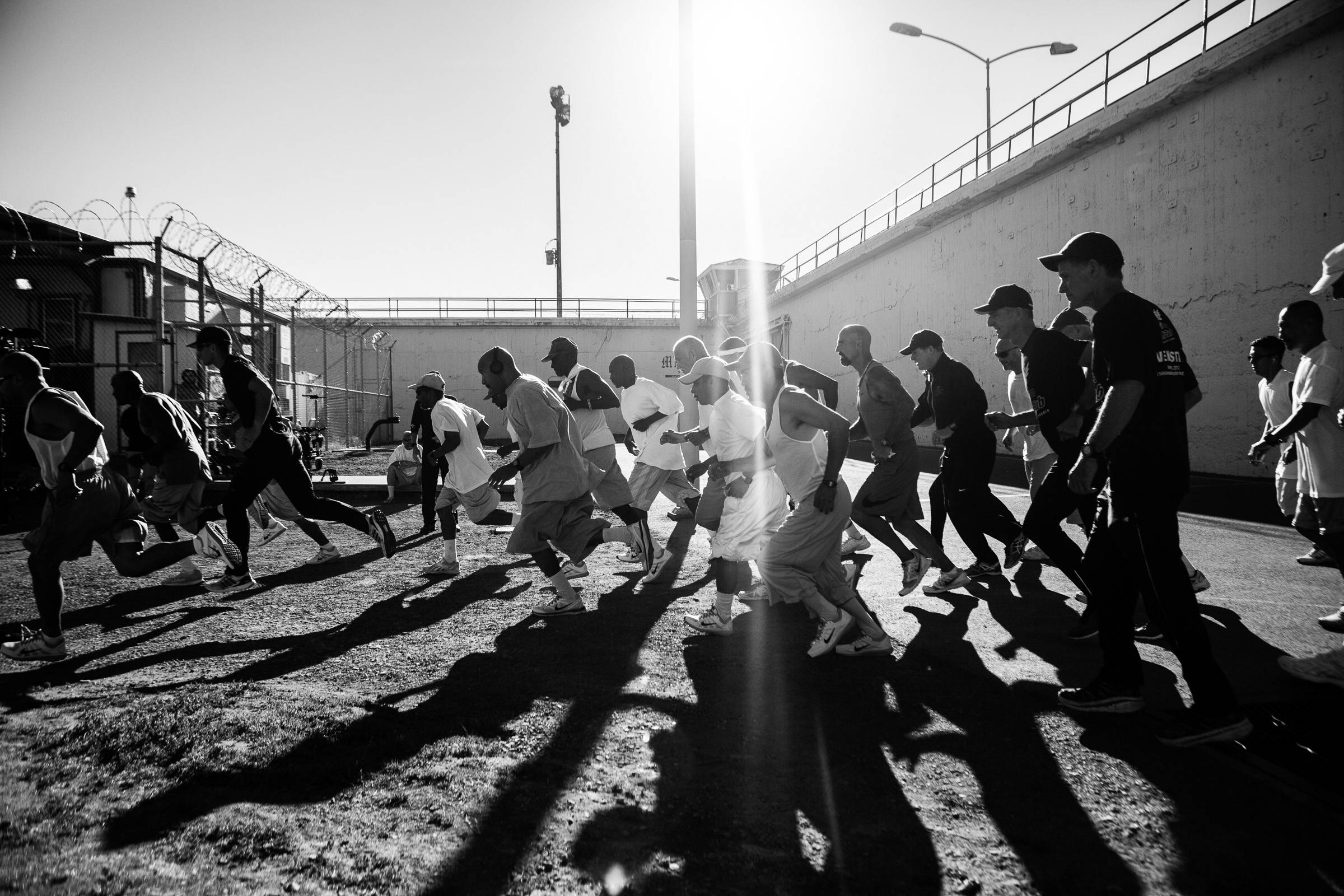
'...in groups or activities, there are mixed races, but people usually return to their own racial group. So, in that respect, I think The 1000 Mile Club is quite unique because, as you'd know, in running communities, people do form these relationships through experiencing difficult practice together...'
Amazing!
Yeah, I found out he was in a prison maybe an hour and a half from San Quintin, so I ended up visiting him. And I was like, 'Dude, there's all these early-release initiatives that are going on—you could actually get a parole board hearing date!' So, he started preparing, and he ended up getting out.
What's his life like now? Is he good?
Yeah! Luckily, he comes from a family with financial means, so he's not struggling. He got a good job and got back together with his wife. He's doing really well.
That's awesome. I love hearing stories like that. So, what kind of hoops did you have to jump through to get access to the prison for filming?
Well, after I read the article, I started scripting a narrative. So, I was originally planning to make it a motion picture.
Like a drama?
Yeah, so I went into the prison just for a visit and to observe a half marathon event; I contacted the coach, and he invited me in. So, I got there, and I was on the yard, you know, just seeing what was going on, and then I spent the next several months researching and talking to people who had gotten out and talking to the coaches, and I was like, 'You know, I think I actually just need to get out of the way and tell this story as a documentary.'
So, the San Quintin run club—the 1000 Mile Club—how many guys are in it?
Ah, maybe thirty? During workouts, at the time I was filming, there was usually twenty to twenty-five guys that would show up. But now after the movie came out—and we screened the movie in there—the club exploded. At their last event, they had seventy people sign up. It's tripled in size.
That's so cool. And how does it work with different groups? As I understand it, people tend to stay in their own racial groups inside.
Yeah, well, prison is regularly segregated along racial lines, and there are different areas of the yard that are, you know, the area for Whites, the area for Blacks, blah, blah, blah... But in groups or activities, there are mixed races, but people usually return to their own racial group. So, in that respect, I think The 1000 Mile Club is quite unique because, as you'd know, in running communities, people do form these relationships through experiencing difficult practice together, you know? So, they really transcend the prison politics.
Do you run?
I'm a runner, but I'm not a marathoner.
Not yet.
Well, the longest I've run is, like, fifteen miles [24 km], and I've only done that a couple of times. For me, though, running is a time when I find answers to my creative problems. They just kinda drop into my head.
[Laughter]
Another cool by-product of running. Now, do these guys in the club ever get released, and if so, do they keep running?
Most of the guys when I was filming are lifers. But right now, San Quintin is undergoing a major transformation into a more rehabilitative type of site. The Governor of California has even changed the name from San Quintin State Prison to San Quintin Rehabilitation Centre.
Right on.
Yeah, they're modeling it after Norwegian prisons and trying to implement changes like more dormitory-style living... I'm not sure if that's exactly right, but they're really making rehabilitation programs available. That being said, most of the people I met during filming were lifers. But the statistics show that about 90% of the people in prison do eventually find their way out because of various early release initiatives, so a lot of people featured in the film have found their way out! And since the club started, there have been 50 or more members who have been released, and there's a zero-percent recidivism rate among the released members of the club.
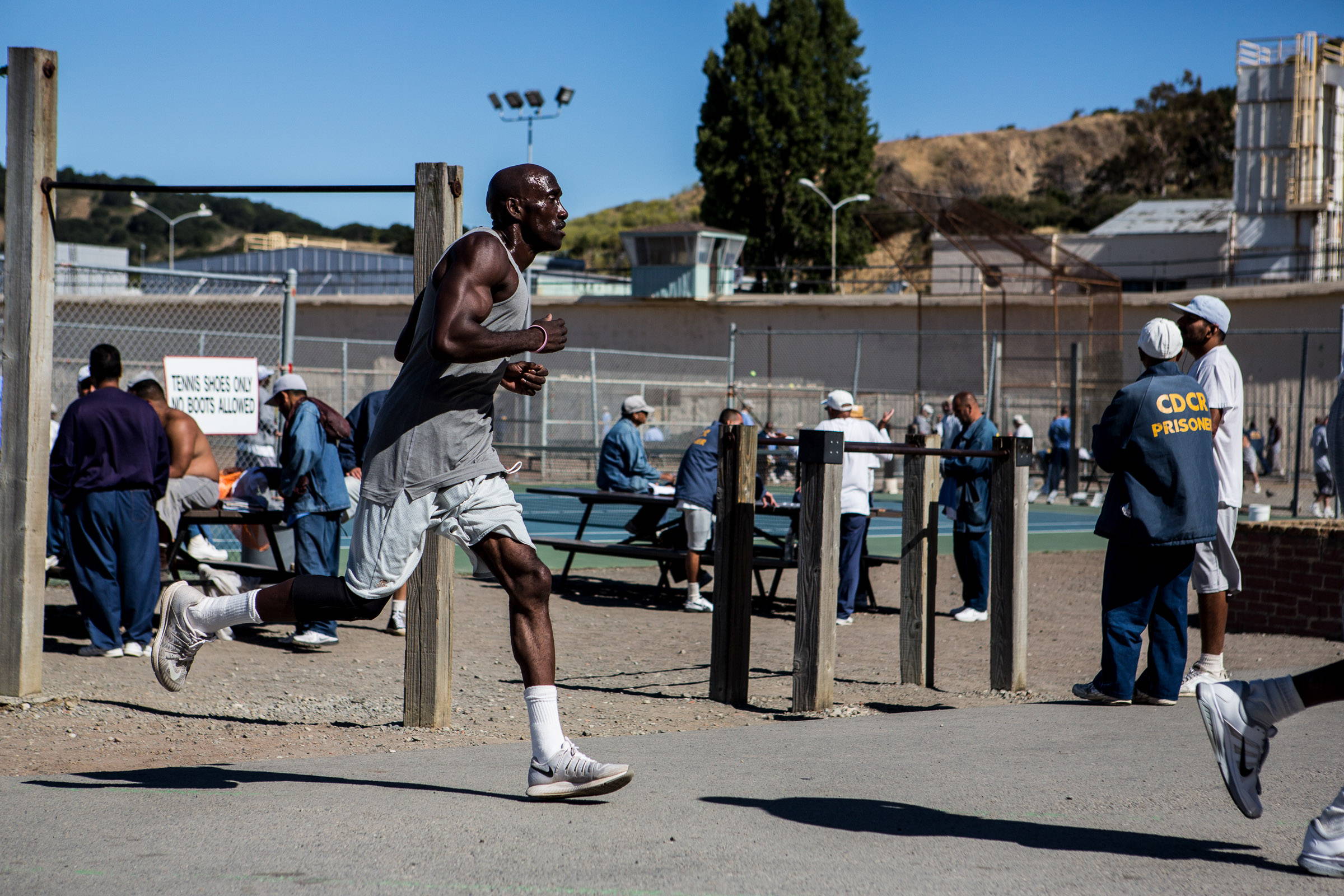
'...it wasn't Frank's pedigree that made the club. It was his consistency. He showed up at the prison, rain, hail, or shine, consistently for eighteen years... There's no finer person than Frank.'
That's amazing. From what I know, the statistics for recidivism are never that great.
No, they're not. I think the recidivism average for California is about 44%. Someone was telling me that it's about 58% in Hawaii. Nationally, it's about 67%, and between three to five years of getting out. But there are a lot of complexities around those figures, but generally speaking, I think the community of the club has a lot to do with the fact that there is this zero percent recidivism rate.
Who's the coach of the club?
Well, the club started in 2005. There was a teacher at the prison named Laura Bowman-Salzsieder, and she was tasked with starting the club, and she herself was preparing to run a marathon. But she knew that it would be difficult for her to coach and administer the club with prison bureaucracy, so she found Frank Ruona, who coached the club for eighteen years. He retired last year.
What's Frank's background? Was he a professional runner or an athletics coach?
So, Frank is a runner's runner. He was a senior executive for a highway construction company, but his passion in life was long-distance running. He ran 78 marathons, 38 ultra marathons, including Western States—
Oh shit, okay. So, he's a legit dude.
Oh yeah, when he was 55, he was ranked the number one road runner in the country in his age group. So, he's got the pedigree. But I will add that it wasn't Frank's pedigree that made the club. It was his consistency. He showed up at the prison, rain, hail, or shine, consistently for eighteen years. Unless he was out of town, he never missed a workout. Very, very dedicated. There's no finer person than Frank.
And he volunteered his time, right? It wasn't a paid gig.
Right, and he got other long-distance runners in the community to join him in volunteering. It's really amazing.
What a great legacy. Now, you mentioned before that you showed the film at San Quintin. What was that like?
Oh, that was an incredible event for a few reasons. One, it took a long time to make the film, and during the process of making the film over six years, I also became a volunteer at the prison. So, people would see me and ask, 'How's that film coming along?' And I'm like, 'I'm working on it!' I think, in some ways, people didn't think I was going to finish it because it took so long. So, when I could finally show it to them, that was a big deal for me personally. And the response was tremendous—
I imagine there was a lot of cheering.
Yes. Cheering, crying, all of the above. And from that point, my team worked to try and get the film shown in as many prisons as possible. We got a lot of important feedback in the sense that people saw these guys finish the marathon... So, like, Markelle, who was one of the main subjects of the film, he was released and then ran in the Boston Marathon.
Wow.
And guys would say that seeing that was a reminder to keep having dreams and goals. And the film explores people's personal lives, and one guy in particular, his story really focused on what it's like to be a father and husband from prison. So, we spend time with his son, and a lot of people that are in prison have kids, so that part of the movie really opened up a lot of discussions that went on way beyond the screening of the film.
That's really cool.
Yeah, and you know, we ended up donating the film to the California prison system. So, it played across 32 prisons on their closed-circuit TV system.
That's fantastic. So, has the movie spawned a bunch of run clubs across other prisons?
You know what? There are a couple of new running clubs.
Really?
Yeah! One formed outside at the San Francisco Probation Office, and another one is forming or has already formed—I'm a little unclear on that—at Salinas Valley Prison in California. And we also screened the film in a northeastern reintegration center for women in Cleveland, Ohio, and I just got an email from someone there, a volunteer, who said they just had their first workout two weeks ago.
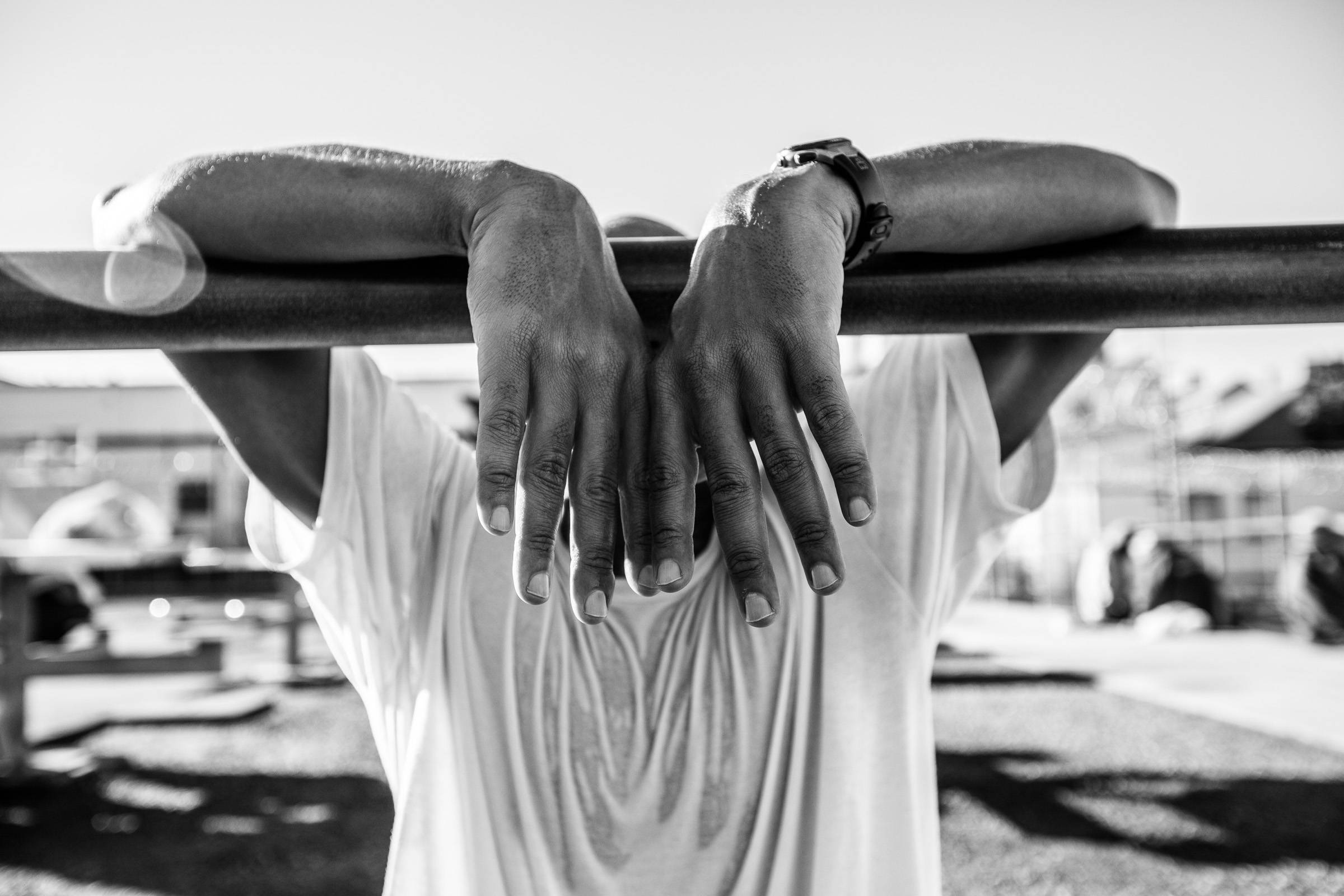
'...after they complete, say, the first five miles in their life, there's a lot of confidence that comes from being able to run x-amount of miles or a certain distance you never thought you'd be able to do.'
This is the best.
I know! It's amazing. And the film ends with Frank visiting a prison outside of Seattle, where there's another club that was formed with advice and guidance from Frank. So, actually, with coaches now, we're working on a handbook for how to form a prison running club.
No way. This is the feel-good story of 2024. Fuck, I love running. Look how good it is!
Yeah, I know! So, we'll be giving that handbook away as a free resource. Because we've been inundated with all these emails from prisons across the country wanting more information, so...
By making this movie, you're potentially... I mean, not to be overdramatic, but you're saving lives by showing running to inmates. Have they shared with you what the benefits have been since they started running?
Yeah, well, for many people in prison, they've never completed anything in their lives, right? These are what we would consider failures of society—that's why they're there. And, so, after they complete, say, the first five miles in their life, there's a lot of confidence that comes from being able to run x-amount of miles or a certain distance you never thought you'd be able to do. I mean, you know this, you run, right?
Yeah, of course. It feels great doing something you didn't think you could do.
Right, so when people have confidence, they can do anything. So, then people use that confidence to get their GED, pursue their education, reconnect with family members, or do things and challenge themselves in ways that they never did before. The people I've spoken to have said that it sets off a chain reaction of other good behaviors because, you know, there are a lot of drugs available in prison, but if they're running, they suddenly care about their nutrition, and they start developing healthy habits, and it helps with anger management, it's a stress reliever... We're not suggesting that running is going to solve our mass incarceration problem or anything, but there are a lot of benefits and rehabilitative aspects to running that provide pro-social interactions, and it improves people's outlook.
Do you miss making the film now that it's done?
I mean, even though it was really, really hard just trying to get the resources to make it—and editing was just a beast—the team and I loved making the movie. I really loved making the movie. I loved the people involved. I loved the materials we were coming upon... For me, it had all the elements you could want as a storyteller. It was difficult, but it was a true joy to be able to make it.
Beautiful. Okay, last question: Are you going to sign up for the Hawaii Marathon this year, and why not?
[Laughter]
I doubt it, I really doubt it. I actually think that making movies is my form of marathon. 26.2 to Life was an ultra for me.
This was your Barkley.
